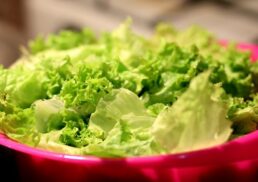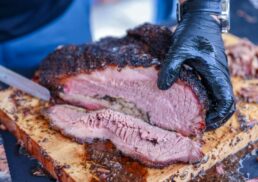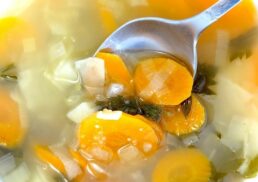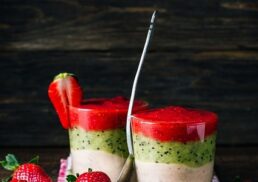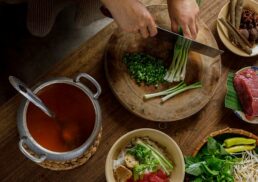Have you ever wondered how to make the most of your beef fat trimmings while elevating your culinary creations and skincare routine? Welcome to the world of beef tallow, a versatile and sustainable option that is gaining popularity for its numerous benefits. In this blog post, you will discover the nutritional advantages of beef tallow, learn how to make it easily at home, and explore creative uses for this remarkable rendered fat.
Table of Contents
Key Takeaways
Understand beef tallow and its nutritional benefits, such as CLA, stearic acid & a high smoke point.
Learn how to make it at home with essential tools & ingredients plus step-by-step guide.
Use homemade beef tallow for cooking or skincare products like balm. Store properly for optimal shelf life.
Understanding Beef Tallow
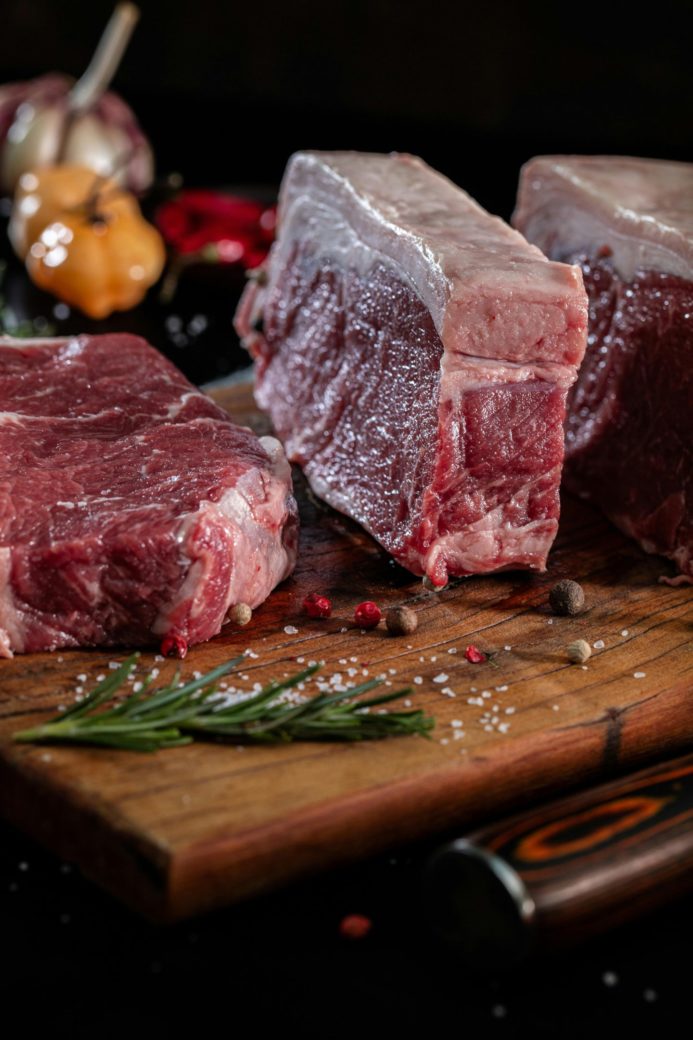
Beef tallow is a rendered fat produced from beef fat trimmings, highly versatile in nature and offering numerous benefits to those who use it. Opting for grass-fed beef tallow will yield a more organic and wholesome product. From cooking to skincare, beef tallow has found its way into various industries, making it a valuable addition to your culinary arsenal and self-care routine.
Historically, beef tallow was a popular choice for frying and baking, imparting a rich and savory flavor to dishes like french fries and pastries. Beyond the kitchen, beef tallow is a natural choice for skincare, as its composition is similar to our own fat, making it suitable for use in soothing dry skin and restoring damage.
The formation of beef tallow requires rendering specific fat trimmings over low heat until they liquefy, followed by the removal of impurities. Lard, a similar product, is derived from pig fat instead of cow fat. The cooking process and type of fat used will influence the final color of tallow, with tallow from younger animals being lighter in color than that from older animals.
The Nutritional Benefits of Beef Tallow
Along with its versatility, beef tallow also offers significant nutritional benefits from conjugated linoleic acid (CLA), stearic acid, and a high smoke point. These qualities make beef tallow a healthy and stable fat for cooking, as well as a valuable addition to your diet.
Conjugated Linoleic Acid (CLA)
Conjugated linoleic acid (CLA) is a type of polyunsaturated fatty acid found in beef tallow that has been associated with potential health benefits. Incorporating beef tallow recipes into your diet can help you take advantage of these benefits, such as weight loss and improved cardiovascular health.
The potential of CLA to promote weight loss is thought to arise from its effects on fat metabolism, stimulating the breakdown of fat cells, and impeding the formation of new fat cells. However, the results of studies on CLA supplementation for weight loss remain inconclusive, and further research is needed to gain a more comprehensive understanding of its mechanisms of action.
Evidence from animal studies suggests that CLA may have cardiovascular health benefits, such as reducing plasma lipoproteins and early aortic atherosclerosis in hypercholesterolemic hamsters and having favorable effects on LDL cholesterol levels.
Stearic Acid
Stearic acid is a saturated fatty acid commonly found in beef tallow, which has been associated with numerous health advantages. Some benefits of stearic acid include:
Lowering LDL cholesterol levels
Reducing the risk of heart disease
Supporting brain health
Promoting healthy skin
Properly stored beef tallow can last up to a year, allowing you to enjoy its benefits for an extended period.
Stearic acid is a saturated fat due to its long-chain fatty acid composition that lacks double bonds between the carbon atoms. This chemical structure leads to a solid form at room temperature and a decreased likelihood of oxidation.
Research shows that stearic acid, found in beef tallow, does not have a significant impact on blood total and LDL cholesterol levels. While beef fat, including stearic acid, may increase serum cholesterol concentrations, it does not increase the risk of cardiovascular disease.
For more info, visit Why Stearic Acid is One of the Most Important Fats For Metabolic Health.
High Smoke Point
Beef tallow’s high smoke point makes it ideal for high-heat cooking methods, such as frying and sautéing. A high smoke point is beneficial for cooking as it allows for higher temperatures to be reached without the oil or fat burning and smoking, thus preserving the flavor and quality of the food.
Beef tallow has a smoke point of 420°F (215°C), making it suitable for high-temperature cooking methods. To obtain beef tallow, you need to render beef fat, which is a process of gently heating the fat to separate it from any impurities. This high smoke point makes it a superior option for frying, sautéing, and other high-heat cooking methods compared to fats like butter and olive oil, which have lower smoke points.
Essential Tools and Ingredients for Making Tallow
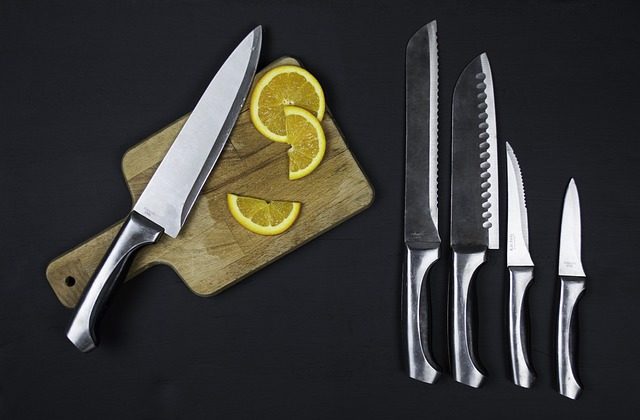
Embarking on the process of making your own beef tallow requires certain essential tools and ingredients. These include:
Beef fat
A sharp knife
Cutting board
Pot
Strainer
Storage containers
With these items, you’ll be well-prepared to create your very own tallow, ready for various applications in cooking and skincare.
The optimal type of beef fat for producing tallow is ‘leaf fat’, which is located around the kidneys of a cow. Leaf fat yields a cleaner and more delicate flavor of tallow, making it the ideal choice for your homemade tallow adventures. Additionally, using rendered beef fat ensures a high-quality product.
The size of the pot used for rendering beef fat into tallow may vary depending on the quantity of fat, but it is suggested to use a pot that can adequately accommodate the fat without overcrowding, allowing for even heat distribution and efficient rendering.
Step-by-Step Guide to Making Beef Tallow
With a grasp on the benefits and essentials of beef tallow, we can now delve into the step-by-step process of how to render beef tallow at home.
This guide will cover the three main stages of tallow creation: preparing the fat, rendering the fat, and straining and purifying the final product.
Preparing the Fat
Commencing the process of beef tallow creation involves preparing the fat. Defrost the beef suet if frozen. Chop it into 1 to 2-inch pieces. This will help facilitate faster rendering during the next step.
Optionally, you can also soak the fat in ice water to give it a lighter hue and remove any impurities. After soaking, pat the fat dry before moving on to the rendering process, which will result in rendered pork fat.
Rendering the Fat
The rendering of fat requires a gentle simmering of fat pieces over low heat until they liquify. This process may take a few hours, but it’s essential to maintain a low temperature to prevent burning the fat and affecting the final product’s quality.
To speed up the rendering process, you have two options: a meat grinder or a heavy-duty food processor. Use either to grind the fat into smaller pieces before simmering. Maintaining the temperature at approximately 230°F (110°C) during rendering allows for efficient removal of water content from the fat.
Straining and Purifying the Tallow
Once the fat is rendered, the next step involves the straining and purification of tallow. Here’s how to do it:
Filter the tallow through a cheesecloth or coffee filter to remove any remaining impurities.
Scrape off any solid particles that have settled at the bottom of the pot.
Remove the skin that forms on the surface during the melting process.
By following these steps, you can achieve a pure, transparent tallow.
Once your tallow is strained and purified, pour it into a heat-safe jar or glass measuring cup and allow it to solidify. Now, you have successfully created your very own beef tallow, ready for various applications in cooking, skincare, and more.
Creative Uses for Homemade Beef Tallow
Equipped with your homemade beef tallow, you can explore its limitless applications. From cooking to skincare, there are numerous ways you can incorporate this versatile and sustainable fat into your daily life.
Let’s explore some creative uses for your freshly made tallow.
Cooking with Tallow
The rich and savory flavor of beef tallow can enhance various dishes, making it a valuable addition to your culinary repertoire. Tallow’s high smoke point allows it to withstand high heat without breaking down, making it an ideal fat for achieving a crispy texture when pan-frying vegetables or deep-frying foods like french fries, fried chicken, and onion rings.
In addition to frying, tallow is also suitable for sautéing, searing steaks, and roasting potatoes, imparting a unique flavor and texture that sets your dishes apart from those made with traditional vegetable oils.
Whether you’re an experienced chef or a home cook, incorporating beef tallow into your cooking can elevate your culinary creations and impress your family and friends.
Skincare and Tallow Balm
Beef tallow isn’t just for cooking; it’s also a fantastic addition to your skincare routine. The nutrient-rich content of tallow can help hydrate and nourish the skin, making it an ideal ingredient for creating a moisturizing and soothing tallow balm.
To make tallow balm, follow these steps, which are quite similar to candle making:
Melt tallow over gentle heat until it is liquid.
Remove from heat and add your choice of essential oils, such as lavender, frankincense, or rose otto.
Pour the mixture into a heat-safe jar or glass measuring cup.
Allow it to solidify before using.
Applied topically, tallow balm provides relief and hydration for dry and irritated skin. This homemade skincare product offers a natural, sustainable, and cost-effective alternative to commercial creams and lotions.
Storing and Shelf Life of Beef Tallow
Proper storage is key to maintaining the longevity and quality of your homemade beef tallow. Keep your tallow in an airtight container or silicone mold, and refrigerate or freeze it for up to 2 years.
By following these storage guidelines, you can enjoy the benefits and versatility of beef tallow for an extended period, making it a valuable and sustainable addition to your kitchen and skincare routine.
Summary
In conclusion, beef tallow is a versatile and sustainable option for cooking and skincare, offering numerous benefits and applications. By learning how to make beef tallow at home and exploring its creative uses, you can reduce waste, enhance your culinary skills, and develop a more eco-friendly approach to your daily life. Embrace the world of beef tallow and discover the myriad ways it can enrich your kitchen and skincare routine.
Frequently Asked Questions
How to render beef fat?
Render beef fat by cutting it into small pieces, simmering it in a pot over low heat for a few hours, and straining it through a fine mesh strainer into a container. Let cool in the refrigerator.
What is the difference between beef tallow and lard?
Tallow is a fat obtained from rendered beef fat, while lard is a fat obtained from rendered pork fat.
How long does beef tallow last?
Beef tallow can be kept fresh for up to 2 years if stored in a refrigerator or freezer.
Can I use beef tallow for frying?
Yes, beef tallow can be used for frying due to its high smoke point.
What are some creative uses for beef tallow besides cooking?
Beef tallow can be used in skincare, such as making tallow balm, a moisturizing and soothing product for dry skin. It can also be used to make soap and candles, providing a long-lasting source of illumination.


